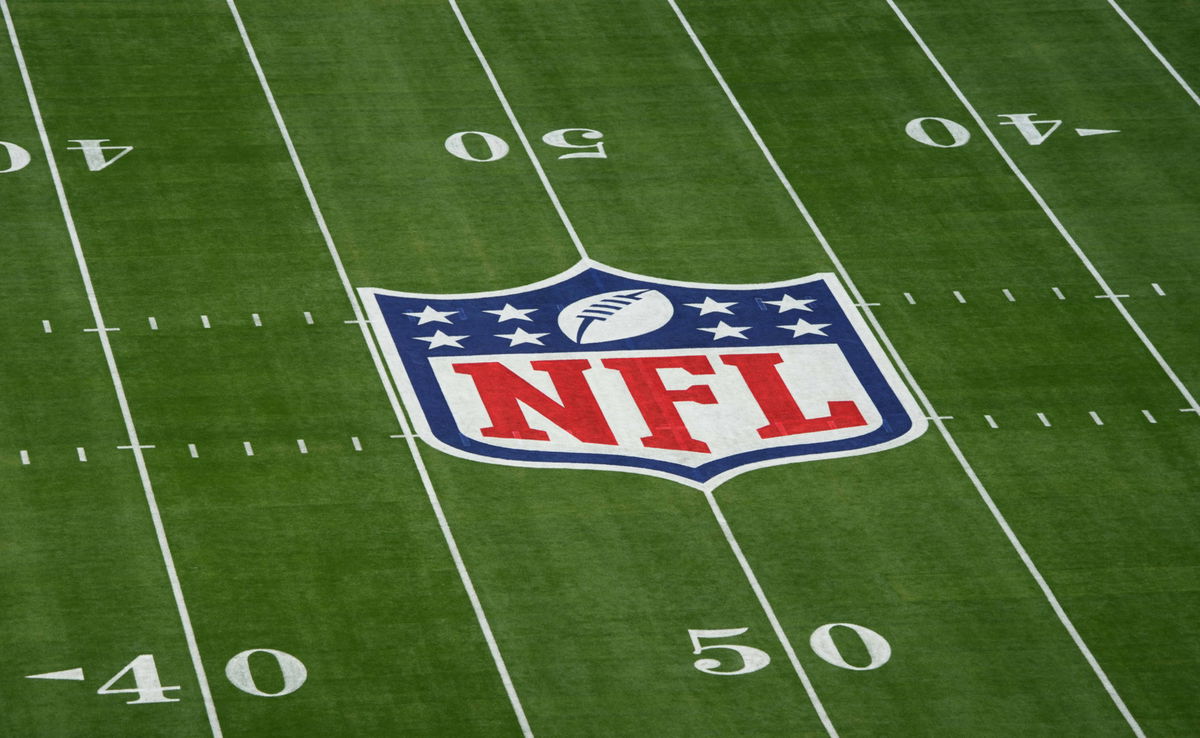
Imago
NFL, American Football Herren, USA Super Bowl LVII-Kansas City Chiefs vs Philadelphia Eagles Feb 12, 2023 Glendale, AZ, USA A general view of the NFL shield logo on the field before Super Bowl LVII between the Kansas City Chiefs and Philadelphia Eagles at State Farm Stadium. Glendale Arizona USA, EDITORIAL USE ONLY PUBLICATIONxINxGERxSUIxAUTxONLY Copyright: xKirbyxLeex 20230212_jla_al2_012

Imago
NFL, American Football Herren, USA Super Bowl LVII-Kansas City Chiefs vs Philadelphia Eagles Feb 12, 2023 Glendale, AZ, USA A general view of the NFL shield logo on the field before Super Bowl LVII between the Kansas City Chiefs and Philadelphia Eagles at State Farm Stadium. Glendale Arizona USA, EDITORIAL USE ONLY PUBLICATIONxINxGERxSUIxAUTxONLY Copyright: xKirbyxLeex 20230212_jla_al2_012
When America faces its hardest hours or celebrates its proudest days, the NFL has an uncanny way of capturing the nation’s pulse. Think of Whitney Houston’s anthem echoing through a tense Super Bowl as jets roared overhead, or a patched-together Steagles roster refusing to fold during World War II. These aren’t just sports moments—they’re reminders of how football can mirror America’s resilience. On this Fourth of July, let’s revisit six remarkable instances in which the NFL became a canvas for our collective patriotism.
Watch What’s Trending Now!
6. A leaguewide salute: Veterans Day takes center stage
In 2011, the NFL formalized its longstanding bond with America’s armed forces by launching the “Salute to Service” campaign. Since its inception, the campaign has evolved into a comprehensive, league-wide commitment. Each November, all 32 teams unfurl banners, players don camouflage decals, and teams host ceremonies to honor and pay tribute to veterans and active-duty service members at their home stadiums. When millions tune in to watch their favorite team, they see an entire league dedicating airtime and resources to say, unequivocally, “We remember your sacrifice.”
ADVERTISEMENT
5. When the NFL refused to fold during World War II
Professional football was fragile during the 1940s. The league drafted young talents, but amidst the tension, team rosters thinned to the breaking point. But rather than breaking down, the NFL improvised in ways that feel almost surreal today. The Eagles merged with the Steelers to form “Steagles“, then briefly joined the Cardinals to form the ill-fated “Card-Pits.” The league recruited players like Ted Doyle, who worked at Westinghouse and contributed to the Manhattan Project, while also playing for the Steelers/Steagles/Card-Pitt. It was proof that America would not completely sacrifice its way of life or abandon its passions.
ADVERTISEMENT
4. Rocky Bleier’s return to the NFL
It’s one thing to come back from an injury. It’s another thing to come back from a war. Rocky Bleier chose the latter. He was a promising Steelers rookie, ready to make his mark. But the Vietnam War interrupted his career—it almost ended it when a grenade tore into his leg and a bullet shattered his thigh. Rocky struggled to walk, and many confirmed that he’d never play again. But he defied the odds and returned to the Steelers just a year later. From there, he became part of the Steelers dynasty and went on to become a four-time Super Bowl champ.
ADVERTISEMENT
3. Games played in the shadow of tragedy: Kennedy Sunday
Then-NFL commissioner Pete Rozelle called it the hardest decision of his career and the biggest regret of his life. When President John F. Kennedy was assassinated on a Friday in November 1963, the nation was paralyzed with grief. But Roselle made the wrenching call to proceed with that weekend’s games. Rozelle and the league felt that people needed continuity, however imperfect. Life must go on. The stadiums were somber, the crowds subdued. Whether it was right or wrong, the then-NFL commissioner surely gave thousands, if not millions, of people a brief respite from the sadness of a tragic loss.
2. Whitney Houston’s Super Bowl moment
Operation Desert Storm was only ten days old, and the safety concerns of the Americans were palpable. The anxiety was raw, and then-NFL Commissioner Paul Tagliabue compared that year’s Super Bowl, which hosted more than 70,000 people with miniature American Flags in their hands, to “the winter version of the Fourth of July celebration.” And then Whitney Houston delivered the “Star-Spangled Banner” with a kind of passion that had everyone with teary eyes. Coaches and players included. And since then, it remains the definitive anthem in sports history.
ADVERTISEMENT
1. The Patriots’ triumph: An underdog tale in a year of healing
Few Super Bowls have ever felt as symbolically charged as XXXVI. After 9/11, America craved hope, and an underdog team named the Patriots, led by an untested Tom Brady—shout out to patriotic red, blue, and white colors—somehow became an improbable emblem of perseverance. Their win over the Rams wasn’t an upset. It was a journey. From a Divisional Round win over Oakland, then off to Pittsburgh in the AFC Championship game, and all the way to the championship. They did it with a no-name former sixth-round pick named Tom Brady. That day, the patriotic colors captured a story of triumph.
It’s not the end of the list. There are a lot more patriotic moments in NFL history that are well-documented. That said, Happy Fourth of July!
ADVERTISEMENT
ADVERTISEMENT
ADVERTISEMENT
ADVERTISEMENT

